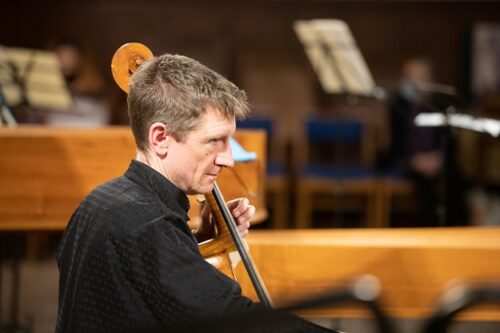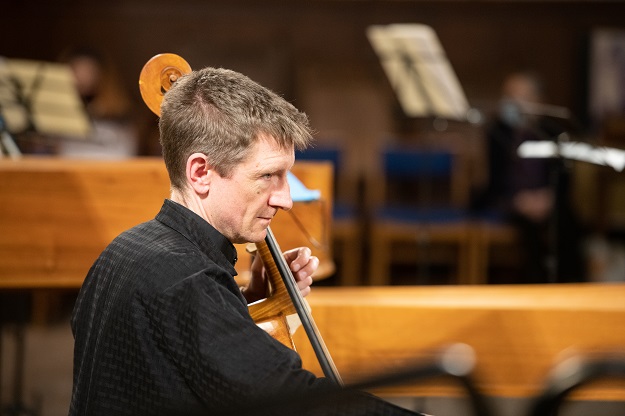 United Kingdom Haydn, CPE Bach: Jonathan Manson (cello), Dunedin Consort, Peter Whelan (director/harpsichord). Queen’s Hall, Edinburgh, 12.2.2023. (SRT)
United Kingdom Haydn, CPE Bach: Jonathan Manson (cello), Dunedin Consort, Peter Whelan (director/harpsichord). Queen’s Hall, Edinburgh, 12.2.2023. (SRT)

Haydn – Symphony No.6 ‘Le matin’; Symphony No. 7 ‘Le midi’; Symphony No. 8 ‘Le osir’
CPE Bach – Cello Concerto in A major, Wq.172
You might not automatically associate the period instrument performers of the Dunedin Consort with the music of Haydn. Certainly, he doesn’t feature on their programmes anything like as frequently as Bach and Handel, their bread-and-butter staples. However, Haydn’s music can benefit just as much from the revelation of period styles and techniques, and the early Esterházy symphonies aren’t actually so distant in time from the great music of those earlier Baroque masters.
Either way, Peter Whelan was an enormously engaging guide through them in this concert. He is best known to Scottish audiences as the former principal bassoon of the Scottish Chamber Orchestra, but he left several years ago to focus on conducting. That means he knows this music from both sides of the podium, so he has a brilliant knack at keeping both audience and performers engaged. His enthusiasm for the music is completely infectious, not least in his opening patter with the audience. (My favourite moment of that was when he described CPE Bach’s concerto as ‘just wild!’) He’s also enormous fun to watch as he almost dances along to the music while he directs from the harpsichord.
The orchestral sound that he and the musicians conjured up was perfect for this trio of symphonies, all dating from Haydn’s first year at the Esterházy Palace. This being the Dunedin Consort, the ensemble was a small one, but it fitted the acoustic of the Queen’s Hall as though it had been tailor-made for it, and there was never any sense of loss or of getting by with a smaller group. The zingy strings were light on their feet, and the terrific winds oozed character, not least when a pair of flutes appeared to chirrup their way through the slow movement of Le midi. The natural horns played with their bells thrust defiantly skywards, and almost every section got its moment in the sun with some terrific solos. Christine Sticher deserves a special mention on the double bass, for a series of ever-more-outrageous solos in each third movement trio. Haydn must really have liked his original double bassist!
All of Haydn’s musical pictures and jokes sparked into life, such as the flowing sunrise and botched music lesson of Le matin, or the quasi-operatic recital of Le midi’s slow movement. The storm that finished Le soir was on the polite side, reminding us that Haydn’s Sturm und Drang years were still some way off. It very much felt like we were watching this playfully scampering tempest from the comfort of a warm interior, but it was no less enjoyable for that.
While it makes sense to perform these three symphonies as a set, it is rather a lot of medicine to swallow in one sitting. So I was glad for the variety provided by CPE Bach’s Cello Concerto, and what a change it was! While Haydn’s music exemplifies well worked-out refinement, CPE’s seems to fizz off in several directions at once like an out-of-control firework. From its busy opening to its dazzling jig of a finale, you never quite knew where it was going next, and its remarkable lament of a slow movement, with its tortured chromaticisms and dark harmonics, sometimes feels like it is knocking on the door of Wagner’s Tristan und Isolde. Principal cello Jonathan Manson played it with flair and relaxed ease, his cello’s wiry sound abandoning much cantabile quality for energetic athleticism. Nor were there any issues of balance, with Whelan shaping the sound so that the cello took its place as first among equals.
Simon Thompson
